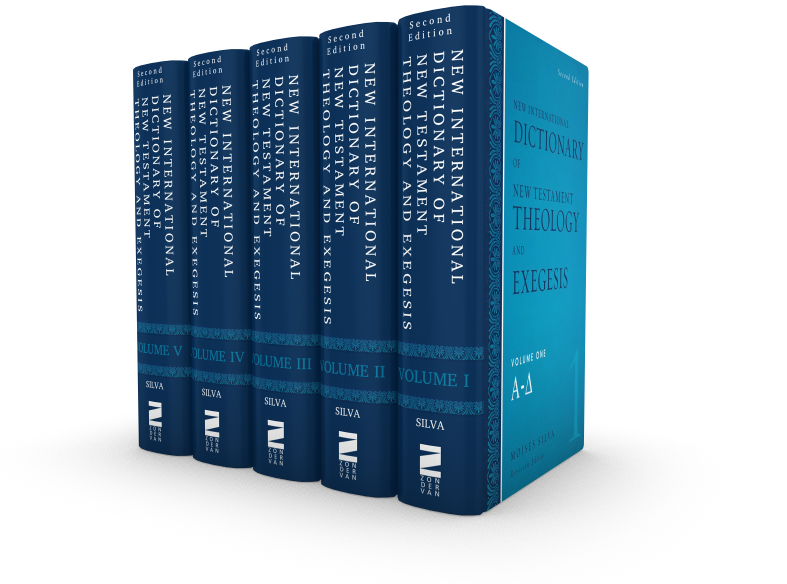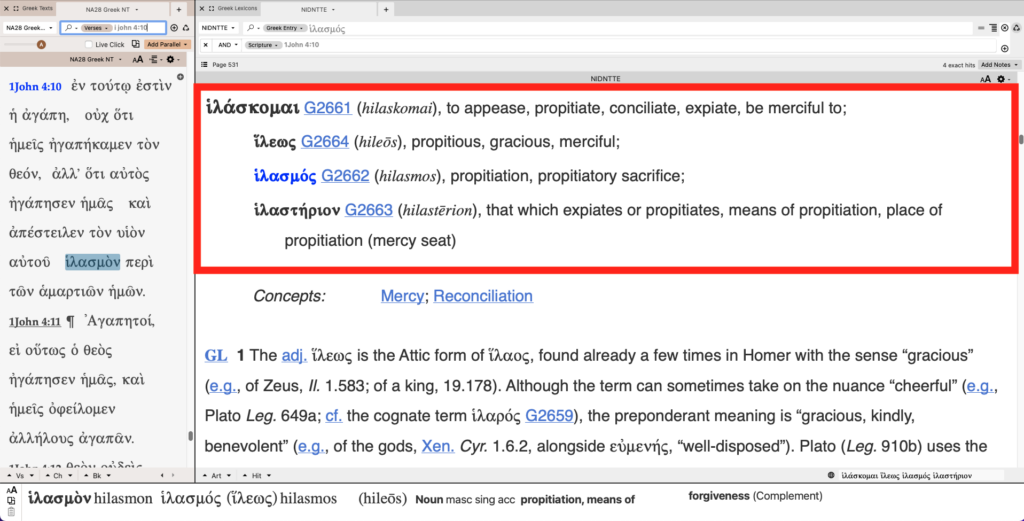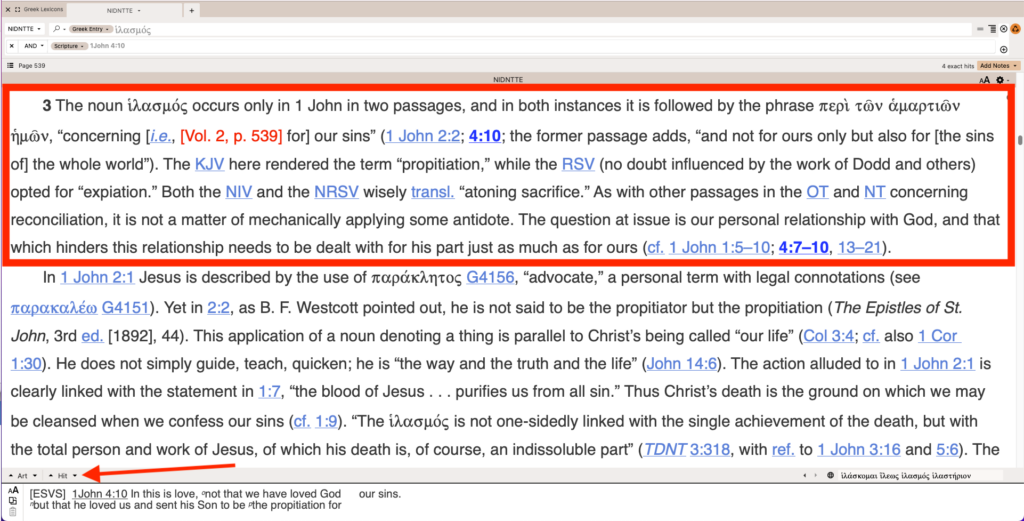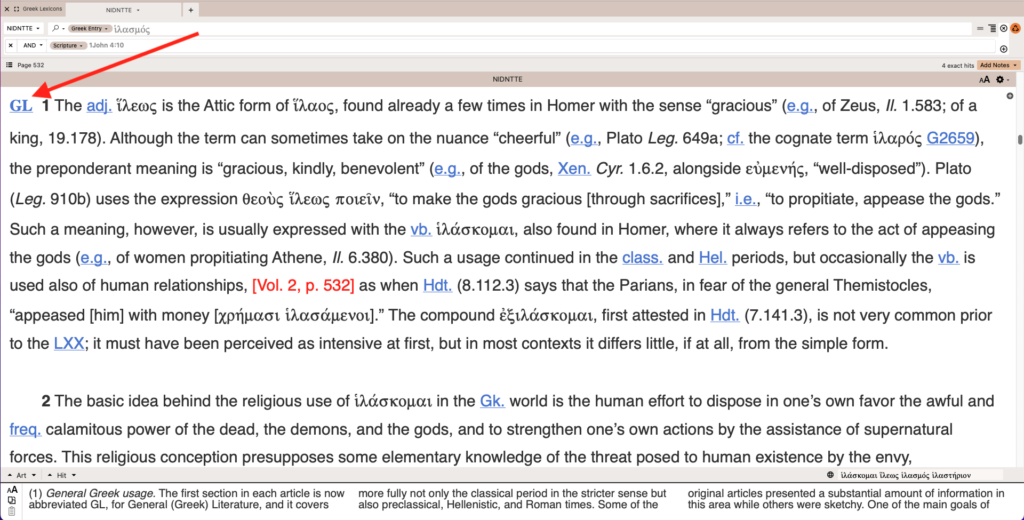
Of all the tools needed for doing exegesis or preparing sermons, lexicons have to be one of my favorites. Whenever I want to go deeper on an important Greek or Hebrew word, I love to go to my lexicons in Accordance for fast and in-depth help. The New International Dictionary of New Testament Theology and Exegesis, or NIDNTTE, is my overall favorite Greek lexicon. Let me explain why using the Greek word ἱλασμὸν from 1 John 4:10.
First, I love the way each entry in the NIDNTTE is organized. When I triple-click on ἱλασμὸν in my Greek text, Accordance takes me straight to the entry for this word. Thankfully, each form of the word is listed at the top of the entry, so I don’t have to scroll through different articles. Each form is explained in the same entry.

When doing Greek word studies, it’s important to see how a word is used first by the author in his own writings. You can then investigate how the word is used by the rest of the New Testament, the Septuagint, and then finally ancient Greek Literature as a whole. Thankfully, each entry in the NIDNTTE is superbly organized by Greek Literature, Jewish Literature, and then the New Testament.
After I triple-click on my word, I then click on the downward hit arrow at the bottom of the pane so that I jump straight to where 1 John 4:10 is listed in the entry. In this way, I can start immediately with where and how 1 John uses this word.

From there, I’ll scroll backwards to see how the rest of the NT uses this word, before finishing at the top of the article with Jewish Literature and Greek Literature.


The second great strength about the NIDNTTE is its depth. Many students of the Bible like using BDAG for Greek studies, and I think it’s excellent too. Although BDAG can’t be beaten in its breadth, the NIDNTTE often goes deeper in its explanations of important words. In their entries on the ἱλάσκομαι word group, BDAG only covers about a page, while the NIDNTTE spends 11 pages on this important theological term. This is because the NIDNTTE is a lexicon that is designed for exegesis and understanding how a word is used theologically in the New Testament. It reveals important aspects of a word that are often essential for interpretation and preaching. This is also why it’s helpful to use different types of lexicons, and not just those that focus mainly on morphology or grammar.
For example, the NIDNTTE includes a few pages discussing differing ways scholars have understood the word ἱλασμὸν in its Old Testament context. Does the word mean expiation or propitiation? Or perhaps it includes both ideas? Regardless of where you come down on this longstanding debate, this is essential to understand if you are going to explain what this word means in a sermon or Bible study.

Finally, the NIDNTTE includes a very helpful list of “Concepts” at the beginning of the five volumes. Unlike the rest of the set, this section is organized by English words. If I want to see what other topics and Greek words are related to the idea of propitiation, I can easily find them here in the List of Concepts. If you’re preaching a sermon or teaching a Bible study on a particular topic, this list gives you a head start on the Greek words that may be important for your study.

For these reasons and more, the New International Dictionary of New Testament Theology and Exegesis is the main lexicon I turn to when doing Greek word studies. I’m grateful for wonderful resources like these, and especially for the ability to use them more efficiently and faster in Accordance. The NIDNTTE is on sale right now for only $120.00, so don’t miss out on this opportunity to add this premier resource to your library!
New International Dictionary of New Testament Theology and Exegesis
Reg Price $200; Sale Price $120 | Buy Now

